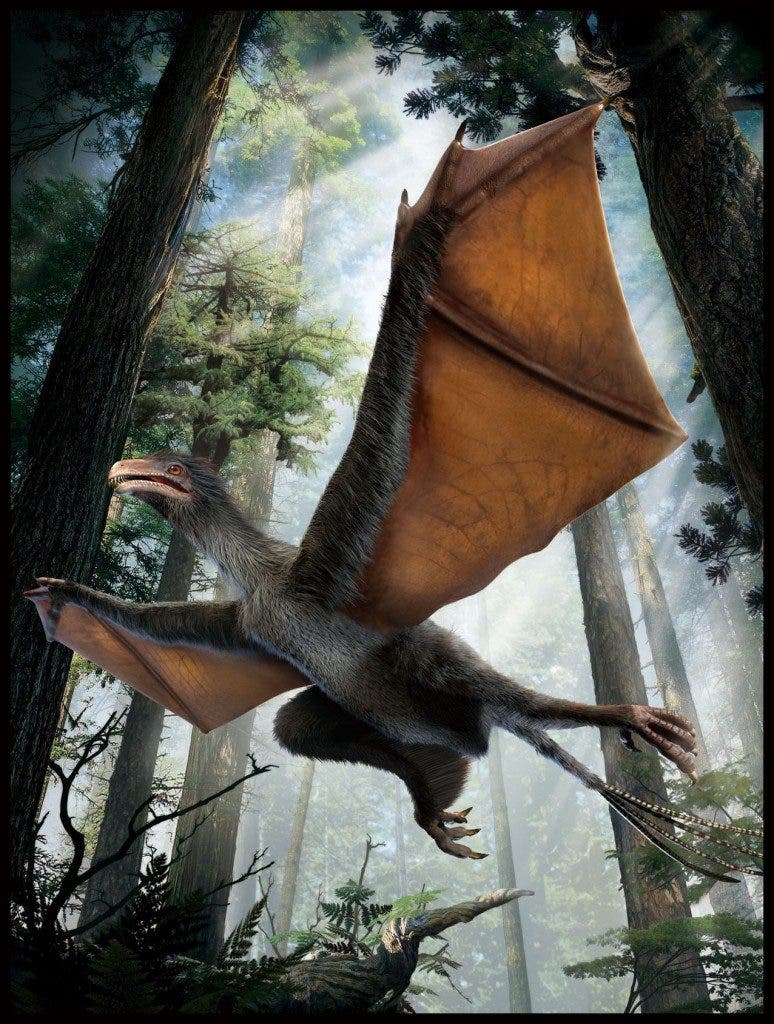Every year, hundreds of millions people fly by plane to meet their family, do business or for leisure. Quite a feat, considering that you know… we don’t don’t have any wings. Like all advanced technology we have at our disposal today, flying is taken for granted. In the early days, however, just getting a few feet off the ground for a couple of seconds was considered a triumph. Like human pioneering flight, nature also had to experiment a lot before flying creatures could evolve. One newly discovered dinosaur species fits well into this story. Unearthed in 160 million year old sediments in China, this queer dinosaur strangely had bat-like wings. It’s uncertain however if it was able to fly or even glide, owing to the degraded state of the fossil records. One thing’s for sure, it makes the evolution of flight much more interesting to study.
Scansoriopterygids are among the smallest dinosaurs known. The juvenile specimens of Scansoriopteryx are the size of house sparrows, about 16 centimeters long, while the adult type specimen of Epidexipteryx is about the size of a pigeon, about 25 centimeters long (not including the tail feathers). Scientists studying these tiny dinosaurs found compelling evidence that suggests these were astute tree-climbers. A hallmark of scansoriopterygids is their long hand and strongly curved claws, which makes them adapted for climbing. These features, however, have also prompted some scientists to suggest that what we might actually be seeing are protowings that sparked the evolution of a wing capable of flight.
The new dinosaur unearthed in China is also a scansoriopterygid, called Yi qi (meaning ‘strange wing’). Each wrist of the animal was crossed by an unusually long rod-like bone, not seen in any dinosaur thus far. Patches of membranous tissue preserved between the rod-like bones and the manual digits suggest the arm was covered in a bat-like wing. This may have had a role in flight, but it’s all rather fuzzy judging from these fossil records alone. If they’re in good fortune, the Chinese paleontologists might find a new specimen or, at least, some fragments in the Tiaojishan Formation of Hebei Province, China where Yi qi was discovered.
Findings appeared in Nature.











